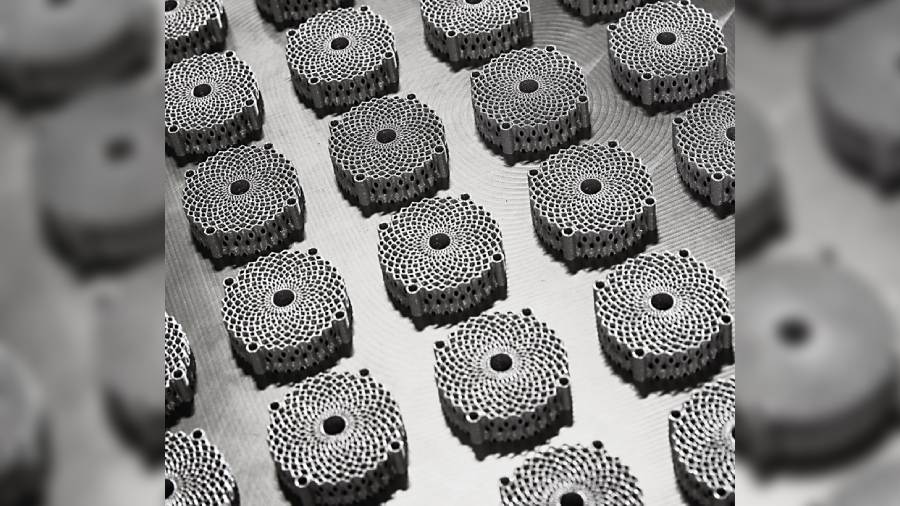The machines stand 20 feet high, weigh 60,000 pounds and represent the technological frontier of 3D printing. Each deploys 150 laser beams, projected from a gantry and moving quickly back and forth, making high-tech parts for corporate customers in aerospace, semiconductors, defence, medical implants and so on.
The parts of titanium and other materials are created layer by layer, each about as thin as a strand of human hair. The machines are hermetically sealed. Inside, the atmosphere is mainly argon, the least reactive of gases, reducing the chance of impurities that cause defects in a part.
The 3D-printing foundry in Devens, Massachusetts, US, is owned by VulcanForms, a start-up that came out of the Massachusetts Institute of Technology. It has raised $355 million in venture funding. And its workforce has jumped sixfold in the past year to 360.
“We have proven the technology works,” said John Hart, a co-founder of VulcanForms and a professor at MIT. “What we have to show now is strong financials as a company and that we can manage growth.”
For 3D printing, whose origins stretch back to the 1980s, the technology, economic and investment trends may finally be falling into place for the industry’s commercial breakout, according to manufacturing experts, business executives and investors.
They say 3D printing, also called additive manufacturing, is no longer a novelty technology for a few consumer and industrial products, or for making prototype design concepts.
“It is now a technology that is beginning to deliver industrial-grade product quality and printing in volume,” said Jörg Bromberger, a manufacturing expert at McKinsey & Co.
In recent years, some companies have used additive technology to make specialised parts. General Electric relies on 3D printing to make fuel nozzles for jet engines, Stryker makes spinal implants and Adidas prints latticed soles for high-end running shoes. Dental implants and teeth-straightening devices are 3D printed.
Today, experts say, the potential is far broader than a relative handful of niche products. The 3D printing market is expected to triple to nearly $45 billion worldwide by 2026, according to a report by Hubs, a marketplace for manufacturing services.
The VulcanForms technology, recalled Greg Reichow, a partner at Eclipse, was trying to address the three shortcomings of 3D printing: too slow, too expensive and too ridden with defects.
The start-up struggled to build a first machine that proved its concept workable. But it eventually succeeded. And later versions grew larger, more powerful and more precise.
Its printers, VulcanForms said, now generate 100 times the laser energy of most 3D printers, and can produce parts many times faster. That print technology is the company’s core intellectual asset, protected by dozens of patents.
But VulcanForms has decided not to sell its machines. Its strategy is to be a supplier to customers in need of custom-made parts.
That approach allows VulcanForms to control the manufacturing process. But it is also a concession to the reality that the ecosystem of additive manufacturing is lacking. The company is building each stage of the manufacturing process itself, making its own printers, designing parts, doing final machining and testing. The Devens facility has six of the giant printers. By next year, there should be 20, the company said.
The do-it-yourself strategy also magnifies the risk and the cost for the start-up. But the company has convinced a roster of high-profile recruits that the risk is worth it.
Beside each machine an operator monitors its performance with a stream of sensor data and a camera image of the laser beams at work, piped to a computer screen.
The factory itself can be a potent recruiting tool. “I bring them here and show them the machinery,” said Kip Wyman, a former senior manufacturing manager at Pratt & Whitney, who is head of operations at VulcanForms. “The usual reaction is, ‘Heck, I want to be part of that.’ ”
NYTNS










